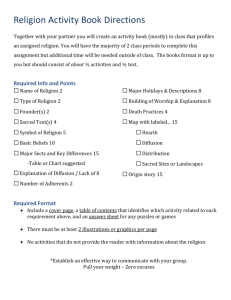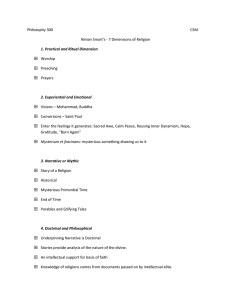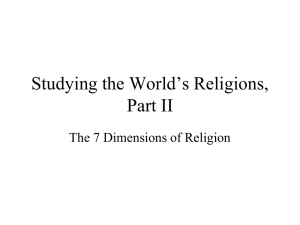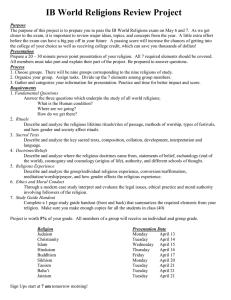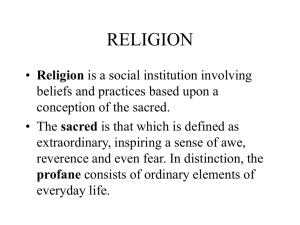Elements of Religion
advertisement
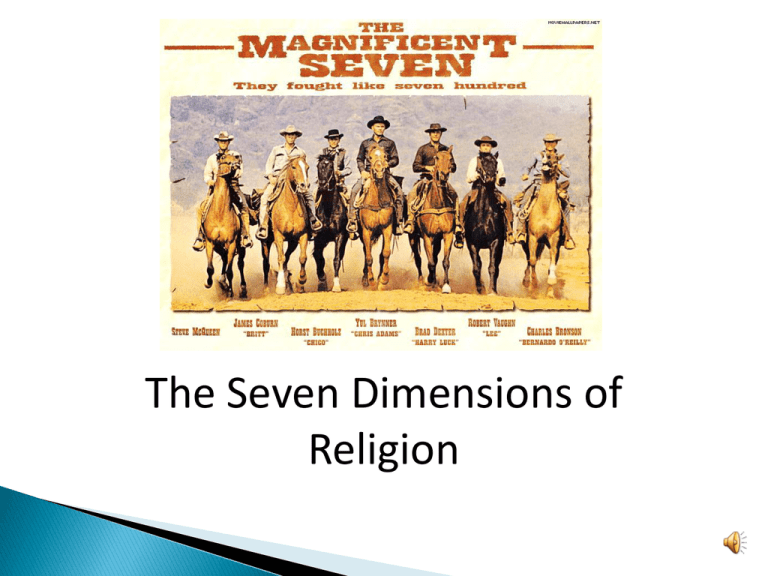
The Seven Dimensions of Religion How does a religion answer the big questions? Different elements of religion answer these questions in different ways. Ninian Smart’s 7 dimensions could be considered the basic elements of religion. ◦ ◦ ◦ ◦ ◦ ◦ ◦ Experiential Mythic Doctrinal Ethical Ritual Social Material The 7 dimensions are not exclusive of each other. Experiential Religious experience of individuals This is how all religions begin. Faith is experiential (and a little doctrinal) Individuals experiencing a god’s self revelation (theistic religions only) Mysticism— becoming one with or physically experiencing the divine Mythic Myth – a story that tends to answer questions of origins and is a source of sacred truth. Non-historical Non-rational Origin Stories Passed down orally or in written scripture Doctrinal • Doctrine - Element of religious belief • Especially strong in creedal religions (ie. Christianity) • Doctrines originate in experience and myth. • They help to make sense of experience and myth. • Doctrines can be used as a litmus test for adherence to a particular religion. Ethical Ethics – The study that determines how we are to act while living in the world. Includes teachings about right and wrong Social justice is part of this category Also includes guidelines for violence (if any). Ritual Ritual – Formal worship and religious practice. Many re-enact myths or sacred stories. Social Communal aspect to religion Human beings are, by their nature, communal We worship in communities Shared experiences fortify religions Organizational structure Sometimes Hierarchical structure Material • • • • Physical objects of a religion Places/implements of worship. Sacred art Sacred entities – Natural – Of human construction Two Approaches to Studying World Religions Comparative Methodology ◦ To know one religion is to know none. ◦ Compare the different dimensions of religion. ◦ Look for the common questions all religions are answering. Approach with Empathy ◦ Empathy – ability to see things from someone else’s perspective. ◦ We must use our imagination. ◦ Don’t judge the belief try to understand it from the believer’s view.

